5 Simple Tips for Selling on Amazon (That Require Almost No Effort)
If you’re selling on Amazon, anything you can do to optimize your storefront is a plus. Here are five ways to boost Amazon sales and grow your...
Is your brand ready for Prime Day? If you're eager to score more sales, our checklist can help! Here are 15 crucial Amazon Prime Day selling tips for 2022.
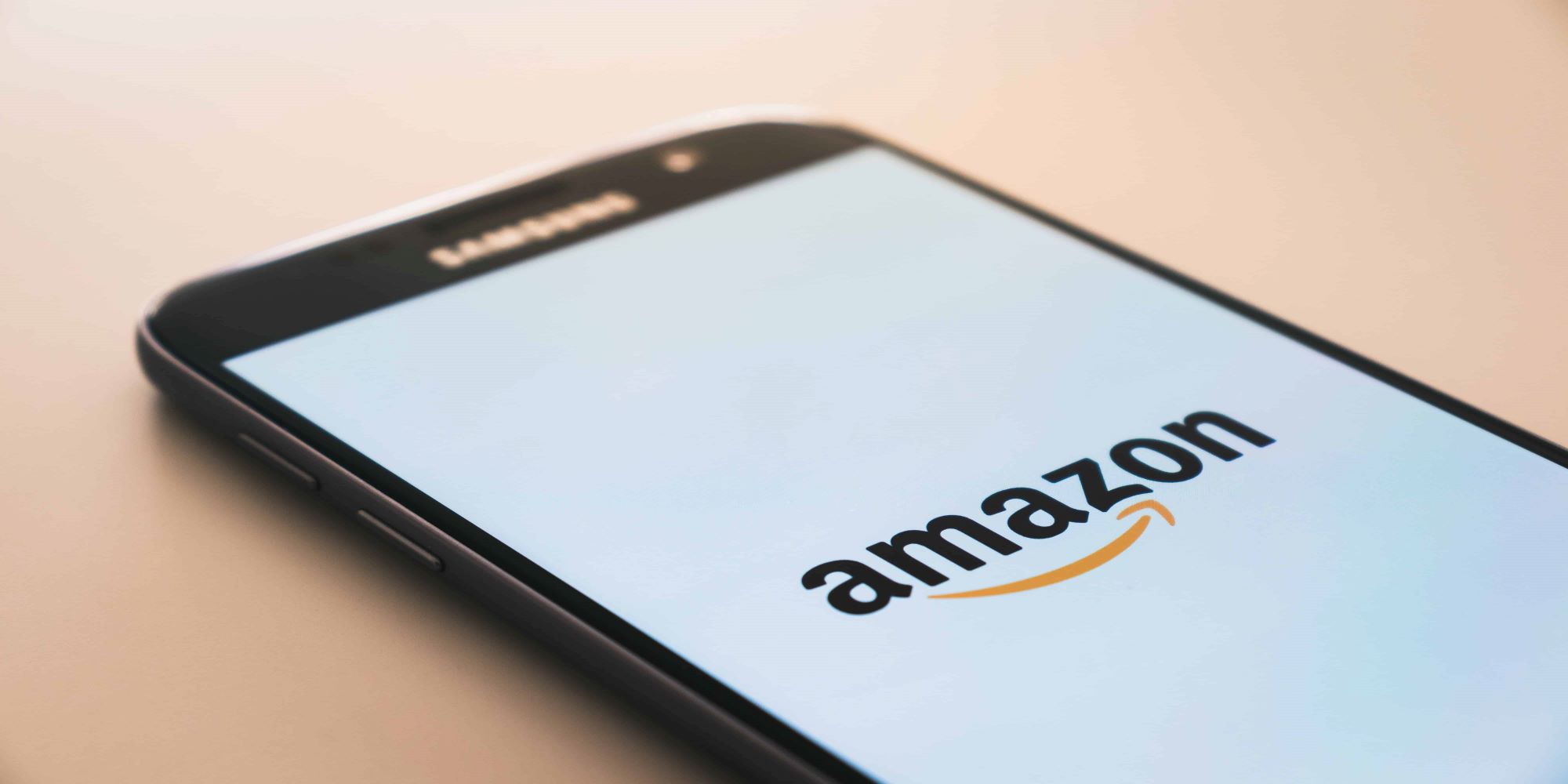
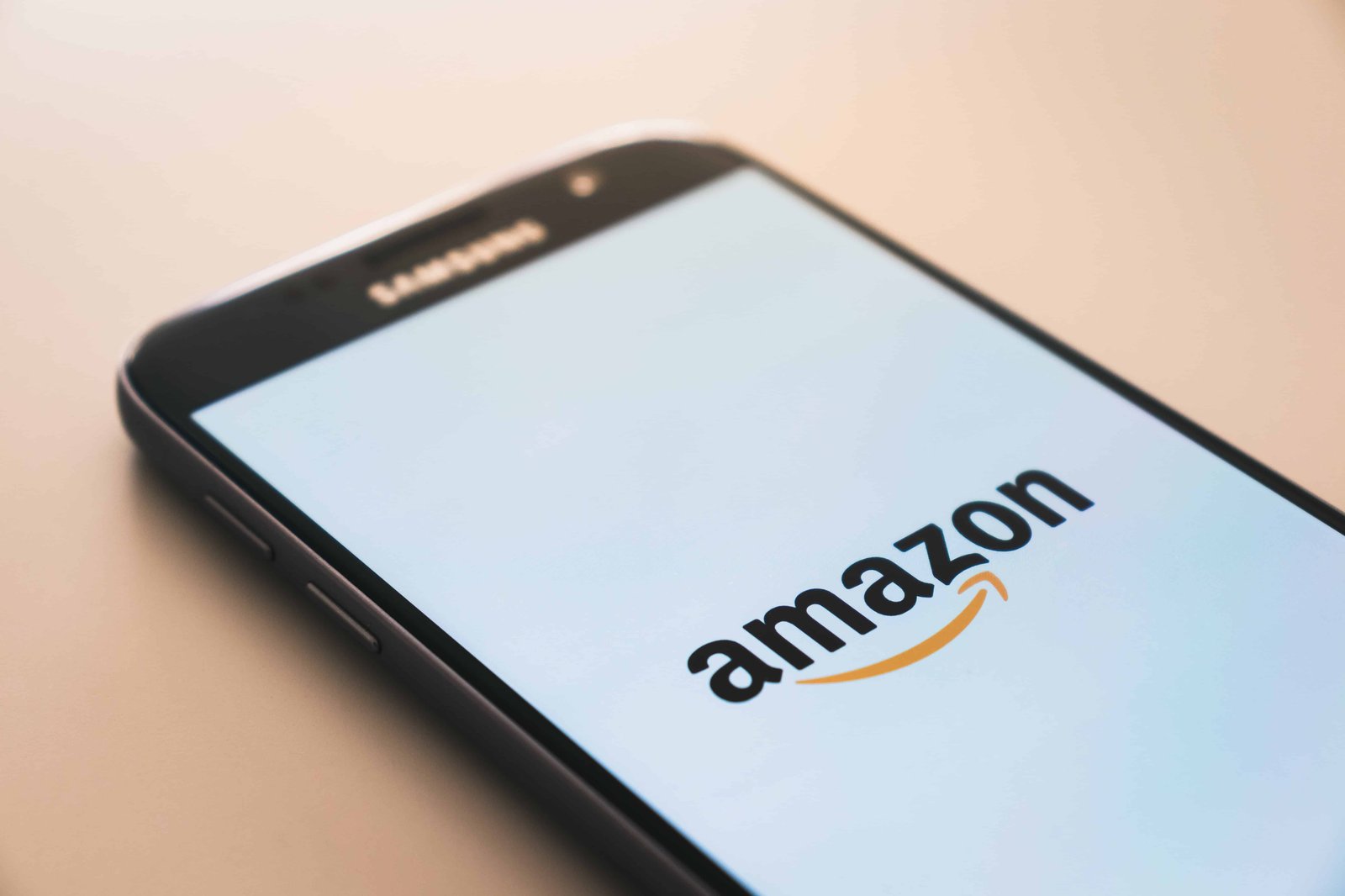
If you’re a seller on Amazon, Prime Day (July 12-13, 2022) should be a top priority.
It’s the perfect opportunity to reach new buyers and get more eyes on your storefront.
Just consider how much Prime Day has grown in recent years, specifically for up-and-coming sellers:
But winning sales on Prime Day doesn’t happen by accident.
Despite being a prime (pun intended) opportunity to earn new business, competition on Amazon is fierce. Anything you can do to make your storefront stand out is a plus.
And the sooner you start planning, the better.
We get it, though: there are a million moving pieces involved in prepping for Prime Day. That’s why we created this actionable checklist for brands of all shapes and sizes.
Update: Amazon officially announced Prime Day for July 12-13, 2022!
Whether you’re a seasoned Amazon seller or are new to Prime Day, we’ve got you covered.
In this guide, we’ll break down:
To kick things off, let’s look at the big-picture brainstorming and planning while you’re still months out from Prime Day.
Chances are there are some specific products you’re looking to really push during Prime Day.
If so, good! You can’t expect everything to be a bestseller.
Besides, the Amazon algorithm is often fickle and optimizing every single one of your product pages would be time-consuming. For the sake of efficiency and maximizing your sales, we recommend doing the following to figure out which products to prioritize:
Translation? Start with your bestsellers and top-reviewed products. Amazon actually showcases high-rated items themselves throughout Prime Day (see the “Deals 4-stars & up” offer from last year below).
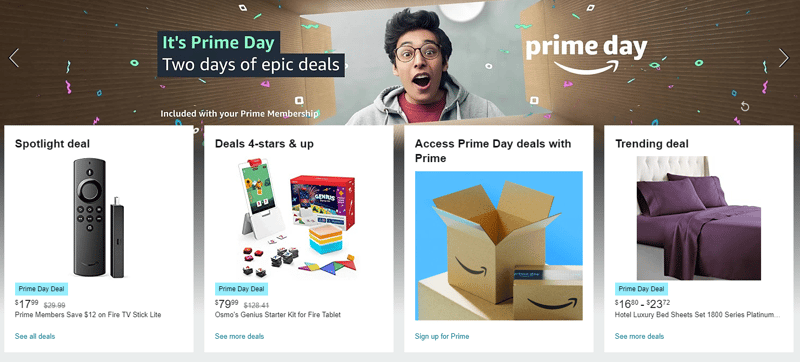 Source: Archive.org
Source: Archive.org
Again, you don’t want to spread yourself too thin. Given that 70% of shoppers read between one and six reviews before making a purchasing decision, products with more star ratings are your best bet.
While you’re still in the early phases of planning, consider how to get more reviews on Amazon before the event rolls around.
Amazon has a ton of features and functions to help boost your products’ visibility.
That said, accessing them requires meeting certain criteria and getting approval. If you’ve gone through the process of building your Amazon storefront, you’ve probably taken some of these steps already. Still, review and check off the following:
If you want more sales, imagery is among the most important elements of your product pages. Specifically, consumers are looking for:
 Source: MarketingCharts
Source: MarketingCharts
As a result, your product page should have a combination of the following in terms of imagery:
Check out how LA Fresh manages to nail their product imagery, essentially including an example of everything we listed above:
 If you want your new images ready for Prime Day, you need to start gathering them ASAP. Maybe that means working with a photographer or designer. Perhaps you’ll take snapshots yourself or source new images from consumers.
If you want your new images ready for Prime Day, you need to start gathering them ASAP. Maybe that means working with a photographer or designer. Perhaps you’ll take snapshots yourself or source new images from consumers.
Either way, make sure you’re not stuck with lifeless product photos on Prime Day! Also, double-check Amazon’s official photo requirements before committing to a shoot.
Pop quiz: what does your competition’s presence on Amazon look like?
If you’re not 100% sure, don’t sweat it. Conducting some light competitive analysis is a smart move to understand how optimized your competitors’ pages are and what you can do better.
We recommend starting with a long-tail keyword phrase related to your business (example: “running headband for women”) and scouting the results (see below). Specifically, look for:
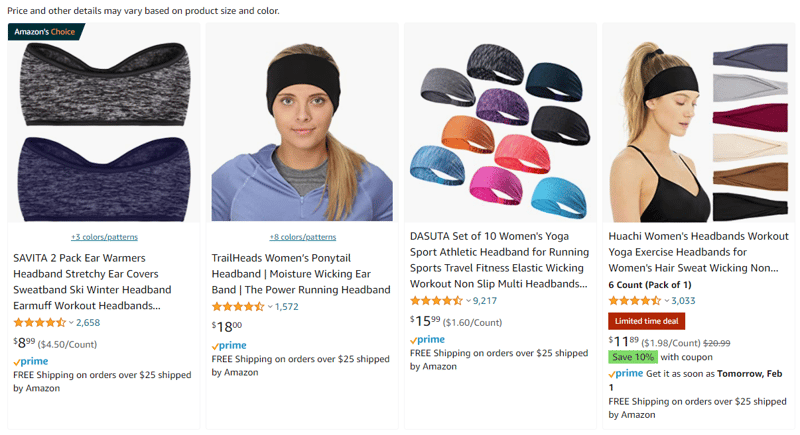
From competitors you know to those you don’t, this process will provide a better understanding of what you’re up against. You’ll also understand the steps you can take to stand out from the crowd.
The boom of third-party sellers on Amazon highlights how important it is to prove that you’re a “legit” brand to people who’ve never heard of you before.
And social media is the best place to do just that.
Let’s say someone Googles your brand name after seeing you on Amazon. What will they find?
While any business can build a website and “look the part,” building an active social presence is a different story. Bonus points if you can feature positive customer comments and user-generated content showing off your products in action.
Brands like LoneCone are extremely active on Amazon and totally crush it on social media.
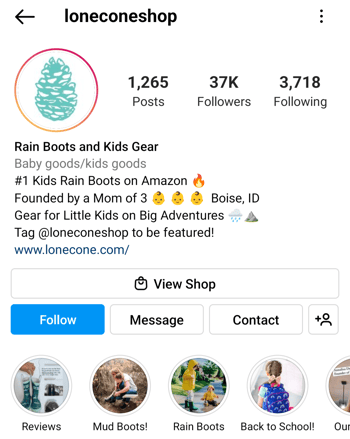 Not only do they regularly feature customers in their content and encourage tagging, but also have a dedicated Stories feed for glowing customer reviews. Since a staggering 88% of consumers seek out UGC before making a purchase, this is a brilliant move.
Not only do they regularly feature customers in their content and encourage tagging, but also have a dedicated Stories feed for glowing customer reviews. Since a staggering 88% of consumers seek out UGC before making a purchase, this is a brilliant move.

Don’t underestimate the power and popularity of social content related to Amazon. From Amazon “hacks” to underrated products, social media at large loves to talk during Prime Day. In fact, the #amazonprime, #amazondeals and #amazonfinds tags on Instagram boast 6+ million posts. Not to mention TikTok’s #founditonamazon and #amazonfinds tags racking up more than 2.3B views and 16.4B views, respectively.
Whether through your Amazon influencers or consumer-to-consumer marketing from past customers, you can build buzz well before your Prime Deals go live. That said, you need to plan your campaigns in advance (hint: Statusphere can help get your creator campaigns rolled out ASAP).
Now that you have an idea of what you want your Prime Day deals to look like, it’s time to actually put your planning into action on your storefront.
It’s no secret that deep discounts are what Prime Day is all about.

Source: Archive.org
Competitive pricing helps increase your products’ visibility in search and makes it more likely to win the ever-so-important Featured Offer (aka “Buy Box”). To enable Prime Exclusive discounts (featuring a “slashed” price), you need to offer a minimum of 10% off. That said, many brands go deeper than that.
There is no “right” answer to how you should price your items during Prime Day. Keep the following tips in mind:
No huge surprises here, right? 75% of consumers expect free shipping for online purchases.
Free shipping offers are the norm for ecommerce and a huge reason why people rely on Amazon (particularly Prime) in the first place. The promise of two-day shipping is an enticing one.
If you haven’t already, make sure to review how to offer free shipping from Amazon, and what it means for your inventory and fulfillment. Doing this will help you price your promotions, too. After all, you don’t want to needlessly tank your revenue because you didn’t factor fulfillment fees into your budget.
Food for thought: 53% of consumers start their product searches on Amazon (versus Google).
Like it or not, Amazon SEO matters. Although figuring out the “right” keywords and what’s going to get traction with the algorithm can be frustrating, you can’t afford to ignore SEO. Like, literally.
Here are the quick basics and best practices of Amazon SEO to consider:

Assuming you’ve got your product images and SEO squared away, consider additional factors that influence purchasing decisions including:
Let’s look at how PAPERAGE manages to do all of the above throughout their product pages. For starters, they highlight key details such as their notebooks’ colors, styles and materials.
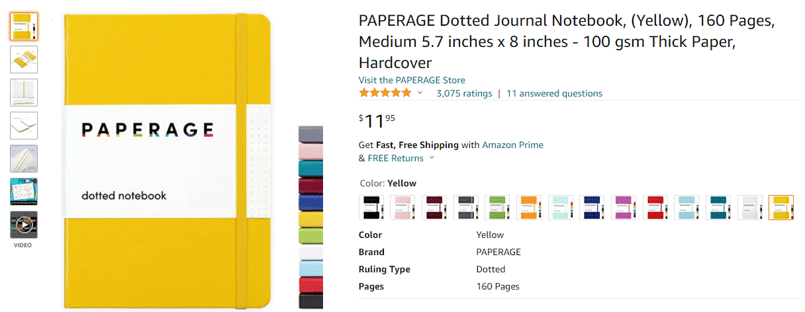
Having all of these points in the title doesn’t require shoppers to do any digging. As soon as they land on the page, they have a pretty good idea of what they’re looking at.
Remember what we said about taking full advantage of the space available on your product page? Check out how PAPERAGE uses a combination of keywords and benefit-driven language, putting bold statements up front to catch the eyes of shoppers.
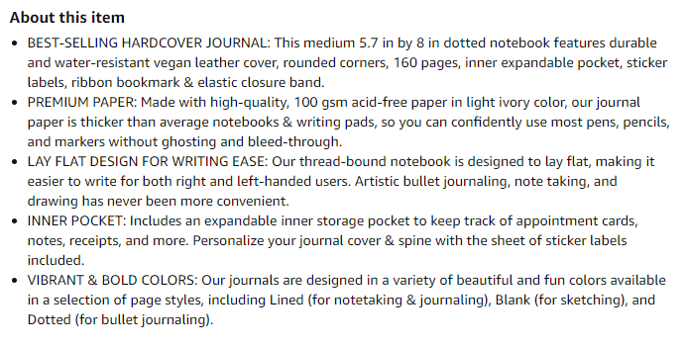
“Out of stock” is the last phrase Prime Day sellers want to see. Heck, the same goes for buyers.
Not only does low stock prevent your ability to maximize sales, but also hurts your visibility in the Amazon algorithm. Whether you’re an FBA or FBM seller, make sure you’re fully stocked and ready for high demand if one of your deals takes off.
This is also important for ensuring that buyers are delighted after the sale. If you want to turn one-off Prime Day buyers into repeat customers, you need to meet and exceed their expectations. As a result, your inventory shipping and packaging deserve your full attention.
Prime Day 2022 is just days away but you’re not quite done prepping yet! To wrap things up, let’s review a few last-minute marketing must-dos to engage buyers before and during the event.
Keep in mind that shoppers are hunting for Prime Day deals beyond Amazon itself. This rings true for your current customer base, too.
As a result, make a point to hype up your Prime Day presence so you can be part of their Amazon carts. Some of the most important ways to spread the word include:
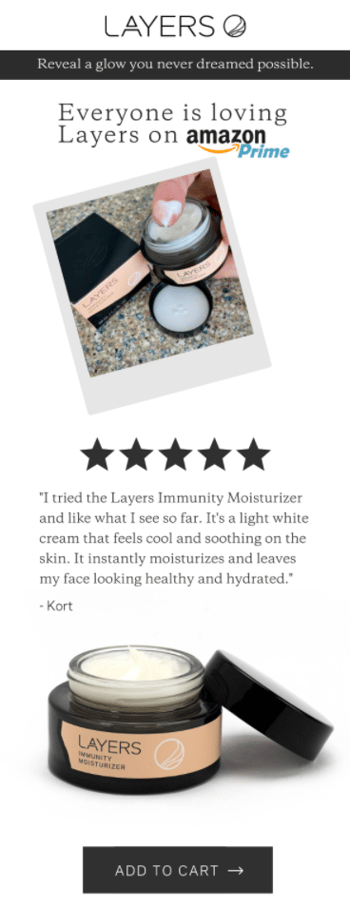
For social posts and emails, double-check that you have everything scheduled appropriately and have paused your regular promotional schedule in the meantime. Your goal is to make sure your current customers are laser-focused on your Prime presence.
The more links you have pointing to your Amazon storefront, the better.
This might seem like a no-brainer, right? Even so, it’s easy to overlook opportunities to funnel more traffic to your Prime Day offers. Some suggestions include:
Brands like DrinkPoppi do a brilliant job at all of the above and highlight how to promote your storefront beyond Amazon itself. For example, the company’s homepage has a sticky bar linking to the brand’s Amazon storefront.
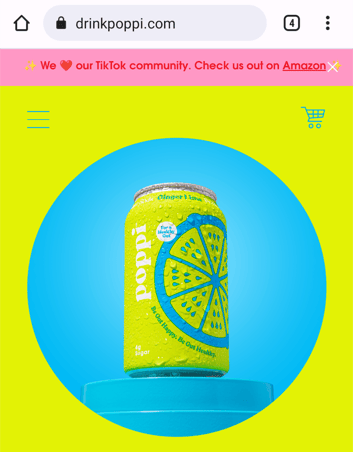 DrinkPoppi also has a massive social presence across Instagram. Their shoppable feed funnels social traffic directly from Instagram to their Amazon page. Here’s a snapshot of the process:
DrinkPoppi also has a massive social presence across Instagram. Their shoppable feed funnels social traffic directly from Instagram to their Amazon page. Here’s a snapshot of the process:

Hint: this is a great example of how to use creators in your Amazon marketing strategy.
Once Prime Day is underway, now’s the time to remind your followers not to sleep on your deals. Watch for trending hashtags related to the event (think: #primeday or #amazonprime) to help your announcements earn even more reach.
 Don’t neglect how creators and Amazon influencers can help you hype up your offers, too.
Don’t neglect how creators and Amazon influencers can help you hype up your offers, too.
Working with creators not only gives your marketing a more human touch but also empowers you to introduce your products to new buyers. Again, audiences on platforms like TikTok and Instagram are wild about Prime Day and finding awesome deals.
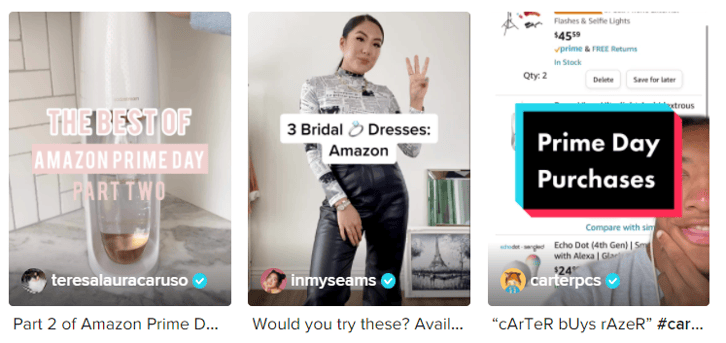
By working with creators, you can promote your products via content that doesn’t feel like an ad at all. For example, this TikTok video from Prime Day 2020 earned a staggering 135,000 likes.
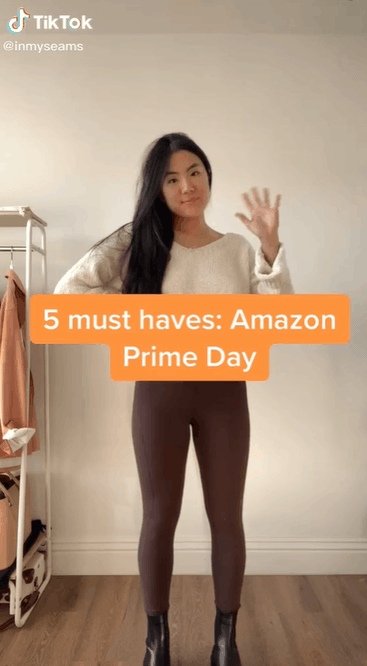 Source: @inymseams
Source: @inymseams
This signals how social audiences are more than happy to engage with content that features products. Creators are key, though — research from TikTok notes that ads featuring creators receive exponentially more interactions and views than those that don’t.
But because Prime Day is such a valuable event for creators, you need to have your promotions approved and squared away well in advance. This requires a lot of legwork upfront if you plan to running creator your campaigns in-house. On the flip side, a full-service creator platform (like Statusphere!) can save you serious time and guarantee relevant creators are hyping your deals when you need them most.
Did you know that 37% of all consumers expect their complaints on social media to be resolved within 24 hours?
Now’s the time for you to be all-hands-on-deck when it comes to service and answering questions from Prime Day shoppers. Pay attention to your social mentions, inboxes and notifications to ensure that nothing falls by the wayside.
Whether or not your Prime Day 2022 is a success depends on your expectations and results.
You should obviously watch how your promotions perform via analytics. The Amazon Seller dashboard updates hourly, meaning you can consistently assess your performance throughout the event.
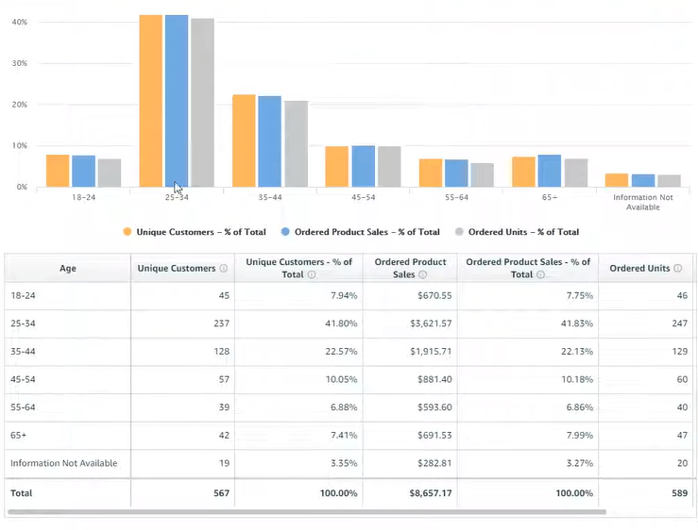 As the sales come through and you crunch the numbers, make a point to reflect on the following:
As the sales come through and you crunch the numbers, make a point to reflect on the following:
By answering the questions above, you can refine your overall Amazon storefront strategy and find ways to level up your presence in the future.
Whew! A lot to cover, right?
The good news is that if you’re already planning out your Prime presence you’re way ahead of the curve. These tips are fair game for any brand looking to make 2022 their best year as a Prime Day seller.
And if you’re looking for campaigns that’ll have the most impact on your Prime Day results, look no further than creators.
From social proof to helping you source valuable UGC and beyond, the benefits of working with Amazon influencers can’t be overstated. If nothing else, having your own independent army of promoters and advocates can immediately set you apart from your competition on Amazon.
But taking a DIY approach to creator discovery and outreach is time-consuming. You probably have a lot on your plate as it is.
If you want to add creators into your Amazon marketing strategy ASAP, we can handle the legwork. That includes finding the right creators for your audience, shipping out your products and reporting your results.
Ready to get started? Get in touch with our consumer-to-consumer marketing experts today to chat about how to level up your Amazon marketing strategy with help from creators.

Click here to download your free Amazon Prime Day Seller Checklist
If you’re selling on Amazon, anything you can do to optimize your storefront is a plus. Here are five ways to boost Amazon sales and grow your...
Learn all about how Amazon's affiliate program works for merchants. From who pays for commissions to program benefits, we break it all down below!
There’s no shortage of influencers promoting products on Amazon. This post breaks down how to find Amazon influencers that’d be the best fit for your...
Be the first to know about the latest tools, trends and strategies in influencer marketing for brands.